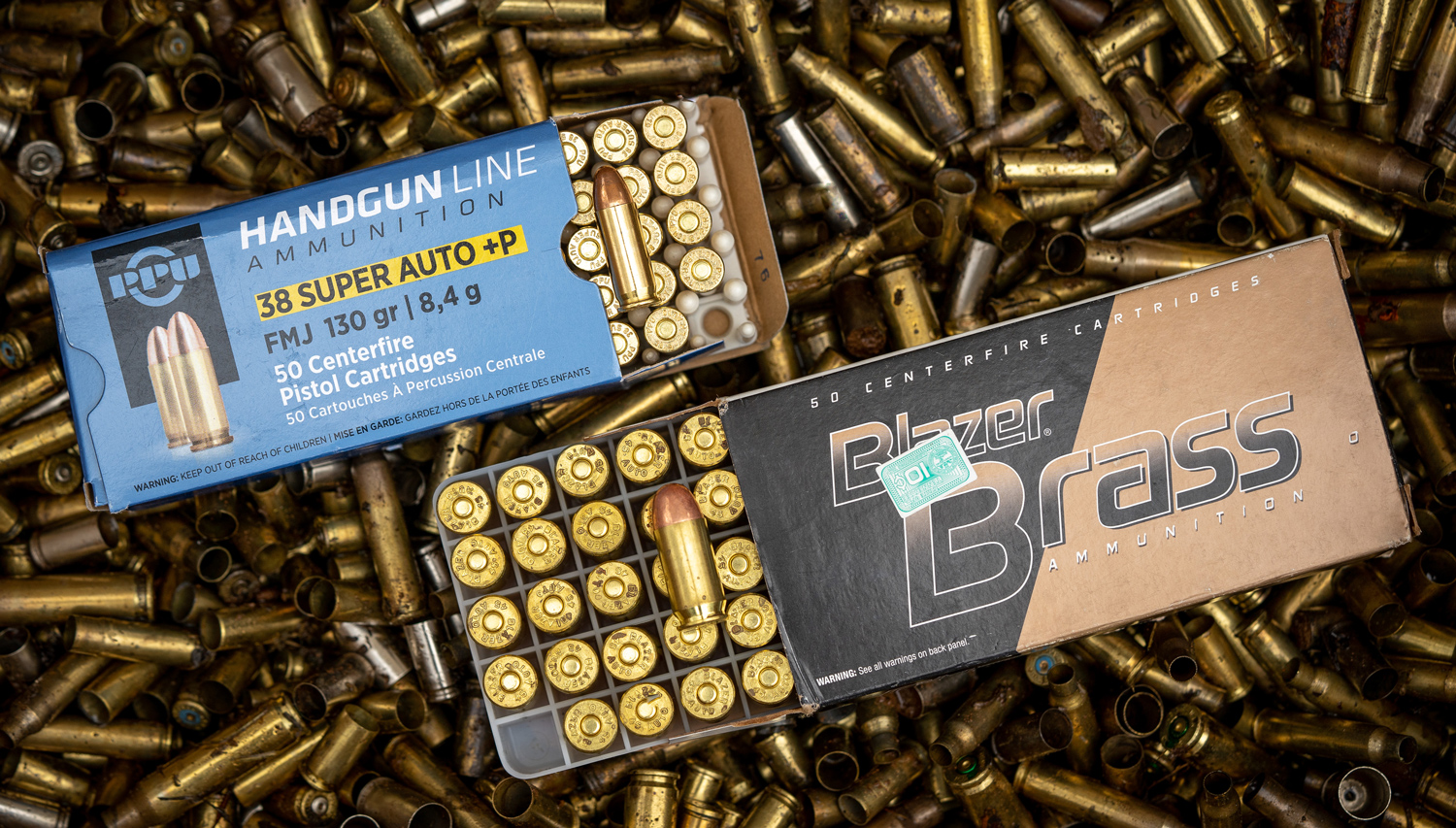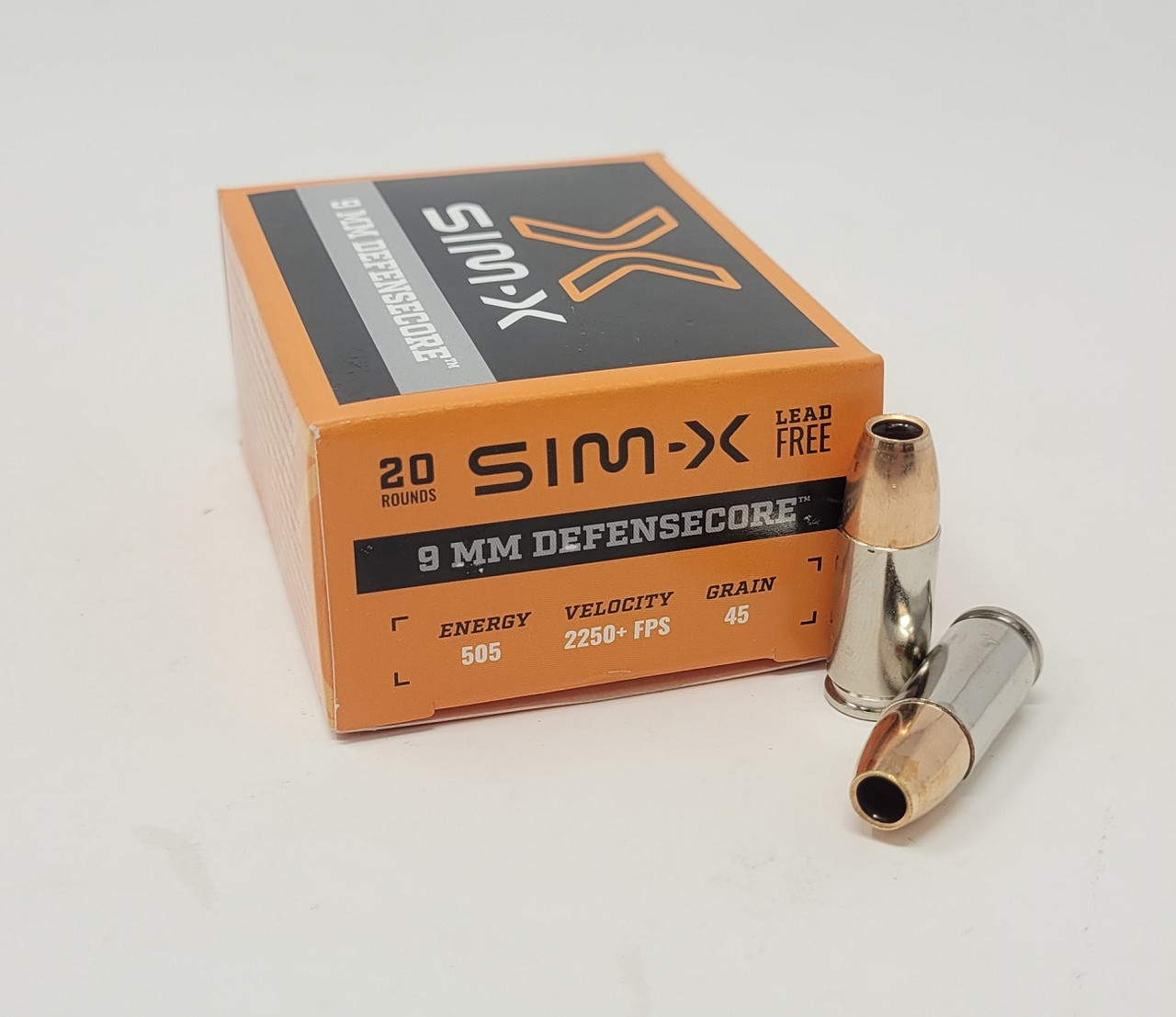.45 Vs 9mm - 9mm is generally cheaper, has less recoil and higher velocity than .45 ACP. The .45 ACP (Automatic Colt Pistol) cartridge holds bullets .452 inches (11.5 mm) in diameter, so it is slightly larger than 9 mm (.355 inches) bullets. Both cartridges have a long history and were first invented over 100 years ago.
A close-up of the .45 ACP shows the primary cap firing the round and ejecting it from the chamber. The depression in the center is where the firing pin hits the primer cap.
.45 Vs 9mm

The 9mm has a bullet diameter of 9.01 mm (0.355 in), neck diameter of 9.65 mm, base diameter of 9.93 mm, rim diameter of 9.96 mm and rim thickness of 0.90 mm.
Glock 45 Gen5 9mm Semi Auto Pistol
The .45 has a bullet diameter of 11.5 mm (452 inches), a neck diameter of 12.0 mm, a base diameter of 12.1 mm, and a rim diameter of 12.2 mm.
A line of pistol and rifle cartridges. Left to right: 9mm Luger Parabellum, .40 S&W, .45 ACP, 5.7x28mm, 5.56x45mm NATO, .300 Winchester Magnum, and 2.75-inch and 3-inch 12 gage.
9mm averages a penetration of between 8" and 15.9". However, the Winchester FMJ has a penetration of 24.5" and the Doubletap JFN+P trail guard has a penetration of 40". Cartridges range from approximately 0.35 to 0.72".
A .45 averages about 11.3"-14.3" penetration. However, the Remington FMJ has a penetration of 27". The cartridge normally expands to 0.75", but the Remington FMJ expands to 0.45".
For The New Gun Owner: 9mm Vs .380 Acp » Concealed Carry Inc
Because of the round's smaller size, 9mm guns typically have a higher magazine capacity than the .45, although specifics vary by gun type. For example, the Glock 17 holds 17 standard rounds of 9mm and the Glock 21 holds 13 standard rounds of .45.
.45 was developed by John Browning in 1904. It has been used by the United States and other militaries since World War I.
The 9mm cartridge was developed from Luger's 7.65x21mm Parabellum. The block was removed from the cartridge, leaving a tapered, rimless cartridge. It was adopted by the German Navy in 1904 and the German Army in 1906. It became more popular after World War I and has since become the most common caliber for American law enforcement agencies and militaries and law enforcement agencies around the world. It is also popular for self-defense.

.45 was developed by the United States. It was intended to be a "real man-stopper". It was adopted by the US Army in 1911. If you plan to shop at LAXAmmo.com or our Pro Shop, please read some important information about our pricing here.
Mm Vs .40 Cal Vs .45 Acp
Join the LAX Range mailing list and receive 50% off gun rentals, 1 coupon per person/use 1 time per person
.45ACP ammunition has historically been the bullet for self-defense, but does it have a challenge in 9mm?
Neutralizing a threat is a key factor when choosing ammunition for personal defense. The goal is not to kill the incoming threat, but to ultimately stop the attack. However, the assailant's death may be a consequence of your actions in self-defense. The .45ACP bullet is a solid defensive round, but organizations like the FBI are beginning to shift their standard preference to the 9mm.
9mm is easier to handle than round. Significantly less recoil compared to .45ACP ammunition makes for more manageable use and more likely to achieve accurate shots. However, there is no clear consensus on the debate between 9mm and .45ACP ammunition. Some experts and enthusiast gun owners have switched from .45 to 9mm, but some are still loyal to .45ACP ammunition.
Acp Vs 9mm: Does The .45 Still Reign Supreme?
Gun experts debate the positives and negatives between a smaller, more agile bullet that allows the gunner to fire more rounds at a faster rate. When shooting fewer rounds in the same time frame compared to larger bullets that don't require a high accuracy percentage, it comes down to the shooter's preference. At the end of the day, the stopping power of both these rounds is enough to protect you from injury. Let us know your thoughts and experiences between 9mm and .45ACP ammo
LAX Ammo San Diego maintains .45ACP ammunition quality and service standards at our manufacturing and facilities and is committed to providing Californians with a means to obtain bulk ammunition without breaking the bank. Try our bullets and see why our customers are loyal to the LAX brand. 4411 Mercury St Ste 103 San Diego CA, 92111. Phone: (858) 987-0509. Follow us on Facebook, Instagram and Twitter too! Here's an unpopular opinion - the 9mm vs. .45 debate is a non-issue. This hotly debated topic has been talked to death. Between the two calibers, only one accounts for the majority of the ammunition's world market share, but both cartridges meet a very loyal user base due to the success of each caliber in multiple fields.
This was hotly debated. By the end of today's blog, you will understand what we are talking about.

Some think that these two calibers were developed at different times for different purposes, but that is not true. Both calibers are designed to be effective
Pretty Sure The 9mm Vs .40 Vs .45 Debate Ended In 1983
The .45 ACP is revered as a classic American caliber for its roots dating back to its predecessor, the Civil War-era .45 Colt cartridge. Its successor, the .45 ACP, which we know and still love today, was developed in 1904. You will find that the .45 ACP is usually sold with full metal jacket bullets weighing 230 grams. It's been like that for over a hundred years now.
In 1902, an Austrian designer named Georg Luger developed the 9mm, two years before the .45 caliber. Both calibers served in World War I and World War II. Although only a few years had passed since its initial development, by the start of World War I, 9 mm submachine guns had been issued for use by the German Army.
You've probably seen jokes and memes all over the internet about the M1911 chambering in .45 America won two world wars. While the meme may have some merit, times change. As early as 1955 the North Atlantic Council chose 9mm as the standard caliber for sidearms issued to NATO forces. At this time most of Europe was sporting the 9mm Browning Hi-Powers chambered, so that made sense. Some sources say that the US is in an armed conflict? It logically made sense for NATO to adopt the 9mm caliber in the event of another major war, as ammunition would not be too difficult to supply to the Allies.
From 1955 to now, many police forces in the US today use 9 mm for their duty pistols.
Mm Fn Versus .45 Acp And 9mm In The Dry Ice Challenge
Before jumping to conclusions, don't let the science speak for itself. Just because the .45 round is bigger than the 9mm doesn't necessarily mean it's better.
There's a saying that goes, "I carry a .45 because I don't want to repeat myself." Ever heard of it? Certainly, there is more kinetic energy behind a .45 projectile that is desirable in a premium defense round. However, look at the image above. The top is a Black Hills 9mm projectile and the bottom is a Black Hills .45 ACP+P projectile. The wound channel is certainly larger but not as penetrating as the 9mm round (about an inch shorter).
Proponents of the .45 caliber say they prefer the larger round because it is more likely to hit a vital organ. With this argument alone, it sure is hard to argue against it. But here's why - according to the FBI, law enforcement officers miss 70-80% of shots fired during a shooting incident. Is it hard to win a firefight if you only have 7-8 rounds in a magazine?

In an Executive Summary of Justice for Law Enforcement Partners published by the FBI, they also debunk the myth of "handgun stopping power" stating that the most important factor in wounding a human target is bullet penetration anywhere between 12" - 18". Bureau standards, the .45 ACP certainly meets this standard, but mm with different weight projectiles.
The .45 Acp: History & Performance
Studies of "stopping power" are inconclusive because no one has been able to scientifically define how much kinetic energy.
0 Comments